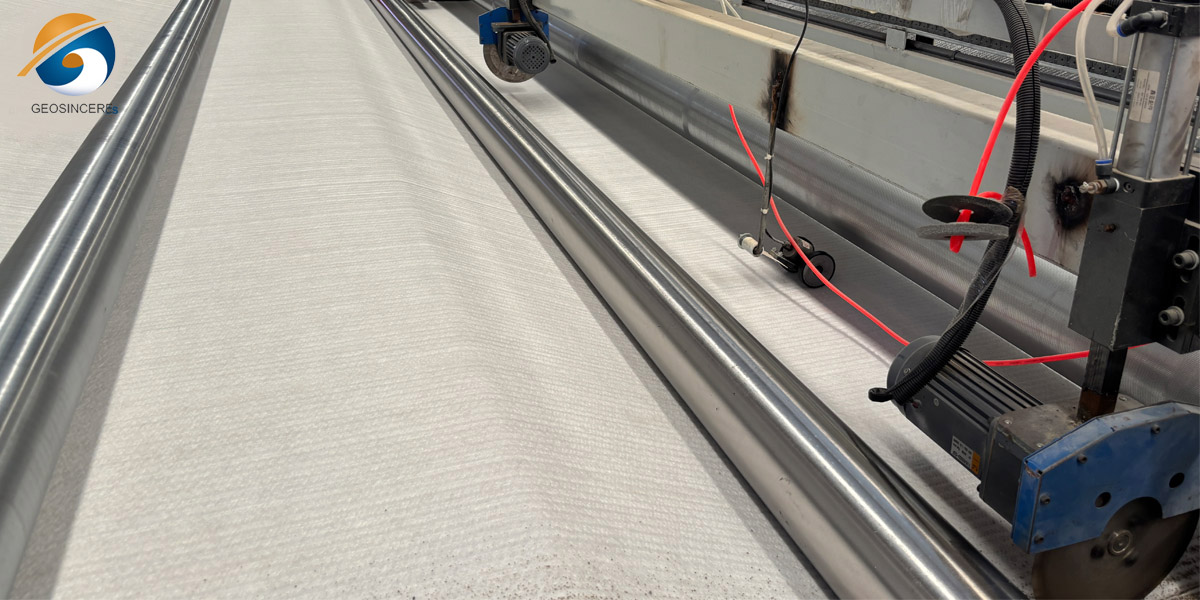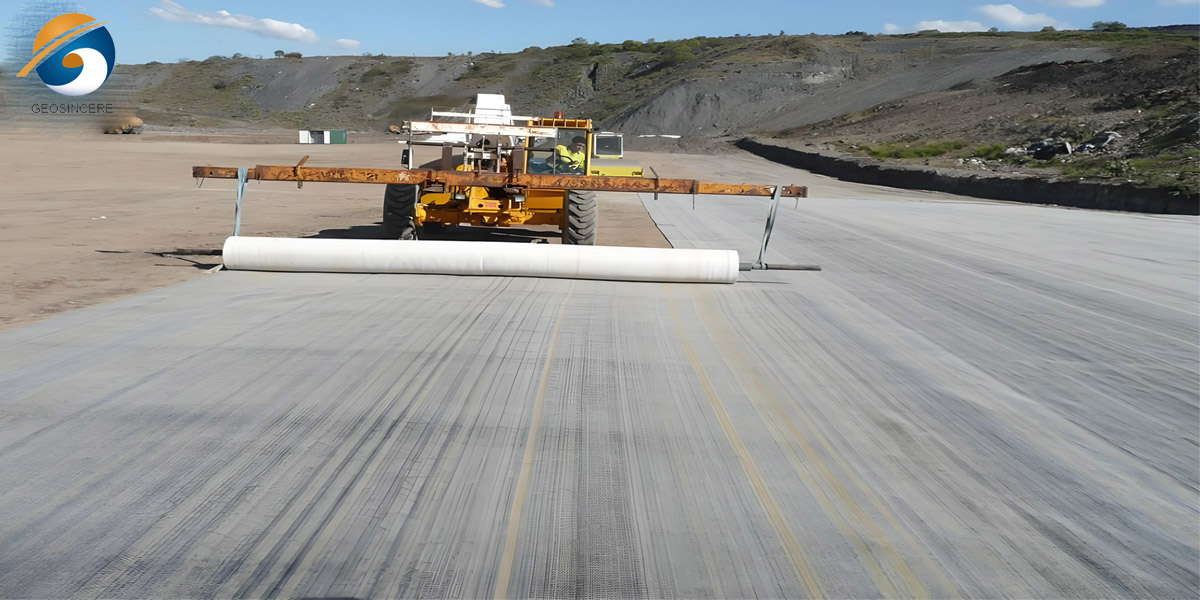What is a Bentonite Clay Liner ?
In the complicated and disturbing fields of civil engineering, environmental science, and water aid management, the project of containing and keeping apart beverages is a regular and essential concern. From making sure the water in a serene neighborhood lake stays intact to safeguarding groundwater from viable contaminants, the integrity of the containment gadget is non-negotiable. While artificial substances like HDPE frequently come to mind, one of the most ingenious and time-tested options originates no longer from a factory, however from the earth itself: the bentonite clay liner. This article delves deep into the composition, mechanisms, types, applications, and nuanced concerns of this extraordinary herbal engineering material.
1. The Fundamental Principle: Understanding the Bentonite Clay Liner
At its most basic, a bentonite clay liner is a geotechnical barrier gadget designed to have an quite low permeability, correctly stopping the passage of fluids. The coronary heart of this machine is sodium bentonite, a special clay cloth whose homes border on the miraculous. To totally recognize how a bentonite liner functions, one ought to first apprehend the mineralogical and electrochemical conduct of its most important component.
Bentonite is a clay, predominantly composed of minerals from the smectite group, which itself is mostly made up of montmorillonite. It fashioned over hundreds of thousands of years from the chemical weathering of volcanic ash in historic our bodies of water. The magic of bentonite lies in its microscopic, three-layer crystalline structure. Imagine a microscopic sandwich: two sheets of silica tetrahedra encasing one sheet of alumina octahedra. This structure incorporates a internet poor cost due to the isomorphous substitution of atoms inside the lattice (e.g., Magnesium for Aluminum).
To stability this terrible charge, positively charged cations, such as sodium (Na+) or calcium (Ca2+), are attracted and held loosely on the floor of the clay particles. In the case of sodium bentonite, which is prized for its top of the line swelling capacity, sodium is the dominant exchangeable cation. When water is introduced, these hydrated sodium ions enable water molecules to be drawn forcefully between the unit layers, a manner acknowledged as interlayer adsorption. This reasons the clay to swell dramatically, growing its quantity by way of up to 15 instances its dry kingdom and forming a dense, impenetrable gel.
This swelling motion is the cornerstone of the geosynthetic liner's functionality. The hydrated clay particles push in opposition to one another, notably decreasing the void areas between them. This consequences in an extraordinarily low hydraulic conductivity (often much less than 1 x 10⁻⁹ cm/s), growing a barrier that is genuinely impermeable to water and many different liquids, rivaling the overall performance of manufactured geomembranes.
2. Forms and Configurations: More Than Just Spread-Out Bentonite Clay Liner
The software of bentonite is now not a monolithic process; it is engineered into extraordinary types to go well with unique undertaking requirements, website conditions, and overall performance criteria.
2.1 Compacted Bentonite Clay Liner
This is the most standard form, frequently used for large-scale containment initiatives like ponds, lagoons, and landfill base liners. The manner includes making ready a secure subgrade, then spreading and meticulously compacting a particular thickness of magnificent sodium bentonite powder or granules. The compaction ensures a uniform, dense layer with minimal voids. While low-budget for massive areas, this approach requires strict fine manipulate at some stage in set up to keep away from skinny spots or insufficient compaction that may want to emerge as preferential pathways for leakage.
2.2 Geosynthetic Clay Liners (GCL)
Representing a good sized development in geosynthetic engineering, GCL is factory-manufactured composites that beautify the overall performance and ease of set up of bentonite. A regular bentonite clay liner consists of a uniform layer of granular or powdered sodium bentonite bonded between two geotextiles. The geotextiles can be woven or non-woven and are related via needle-punching, stitch-bonding, or adhesive. The top geotextile frequently acts as a shielding layer and a platform for hydration, whilst the decrease one interfaces with the subsoil. Clay liner is shipped in rolls, making them easier, faster, and greater constant to deploy than compacted liners. They are appreciably used in landfill caps, secondary containment, below highways as a vapor barrier, and in composite liner structures alongside geomembranes.
2.3 Bentonite Panels and Waterstops
For specialised applications, specifically in concrete construction, gcl liner is pre-packaged in panel varieties or as hydrophilic waterstop strips. Bentonite panels, regularly consisting of bentonite held inside a corrugated cardboard sheet, are used for waterproofing underground buildings like basis walls, tunnels, and plaza decks. The cardboard ultimately biodegrades, leaving the bentonite to structure a seamless, self-healing seal in opposition to the concrete. Waterstop strips are embedded in concrete joints, the place they swell upon contact with water, completely sealing the joint towards water intrusion.
3. A Multitude of Applications: Where Bentonite Clay Liner Excel
The special homes of bentonite clay liners make them crucial throughout a broad spectrum of industries:
3.1 Water Retention and Aquaculture
This is one of the most frequent applications. Geo clay liner is used to line ornamental ponds, irrigation canals, firewater storage reservoirs, and aquaculture tanks for fish and shrimp farming. Its self-sealing potential is in particular precious in soils inclined to minor agreement or animal burrowing, as it can frequently seal small punctures automatically.
3.2 Environmental Containment
The environmental safety enterprise depends closely on bentonite. In present day landfill design, it is a crucial factor of the composite liner device in the base and, simply as importantly, in the closing cap. The base liner prevents leachate (contaminated liquid from waste) from migrating into groundwater, whilst the cap minimizes rainwater infiltration, lowering the extent of leachate generated. Similarly, bentomat geosynthetic clay liner is used to cap and isolate old, contaminated sites, preventing the unfold of pollutants.
3.3 Infrastructure and Transportation
Geocomposite clay liner is extensively used underneath roadways, railways, and airport runways as a vapor barrier. By stopping water vapor from rising from the subgrade into the base course, Bentomat clay liner preserve the soil's energy and stability, decreasing frost heave in bloodless climates and prolonging the lifespan of the pavement structure.
3.4 Industrial and Secondary Containment
Facilities storing fuels, chemicals, or different probably hazardous beverages are regularly required to have secondary containment systems. GCL pond liner grant a robust, impermeable flooring and encompass (bund) for these areas, making sure that any unintended spill is contained and does no longer attain the herbal environment.
4. A Balanced Perspective: Bentonite Clay Liner Advantages and Inherent Limitations
No engineering fabric is best for each situation, and geosynthetic clay liner is no exception. A thorough contrast of its execs and cons is quintessential for acceptable material selection.
4.1 Bentonite Clay Liner Advantages
- Self-Sealing and Self-Healing: This is its most celebrated feature. Unlike a inflexible geomembrane that can be completely compromised by way of a puncture, geosynthetic clay liner can swell into small gaps, cracks, or even minor punctures, restoring the integrity of the barrier.
- Environmental Sustainability:As a naturally going on clay, it is non-toxic, inert in many environments, and requires much less power to system than artificial polymer liners, presenting a "green" answer for many projects.
- Durability and Longevity: When maintained inside its diagram parameters (i.e., saved hydrated and blanketed from chemical attack), a geotextile clay liner is a everlasting geological barrier that does no longer degrade over time.
- Ease of Installation (GCL):The roll-out nature of gcl geosynthetic clay liners substantially reduces set up time and labor fees in contrast to the meticulous placement and compaction required for compacted clay liners or the welding of HDPE sheets.
- Adaptability: It can conform to irregular subgrade surfaces greater without problems than stiff artificial liners, supplying a extra intimate contact and lowering the manageable for leakage at seams or wrinkles.
4.2 Bentonite Clay Liner Limitations and Considerations
- Chemical Compatibility:The swelling mechanism of sodium bentonite is noticeably touchy to water chemistry. Exposure to water with excessive ionic power (e.g., saltwater, high mineral content) or sure chemical substances (acids, robust alkalis, some natural compounds) can suppress the double-layer development, inhibiting swelling and probably growing permeability. In such environments, chemically resistant bentonite (e.g., polymer-enhanced) or choice clay liner landfill need to be considered.
- Susceptibility to Desiccation:If a bentonite geosynthetic clay liner dries out, it will decrease and shape desiccation cracks. While it can theoretically re-swell upon rewetting, the technique may also no longer be flawlessly uniform, and some integrity should be lost, mainly after more than one wet-dry cycles. This makes it much less appropriate for purposes in arid climates or for liners that will journey fluctuating water ranges barring a protecting cover.
- Hydration and Swell Pressure: The swelling of gcl clay liner generates widespread pressure. This have to be accounted for in the design, in particular in vertical or sloped applications, to make sure the confining soil or shape can face up to the strain besides destabilizing.
- Quality Control: The overall performance is immediately tied to the high-quality of the uncooked bentonite and the care taken throughout installation. Inadequate subgrade preparation, terrible seam overlapping in bentomat pond liner, or harm all through backfilling can all lead to machine failure.
Conclusion
A bentonite clay liner is a profound instance of leveraging a herbal geological method to resolve modern-day engineering challenges. It is a long way greater than easy clay; it is a extraordinarily engineered machine that capitalizes on the innate swelling potential of sodium bentonite to create a dynamic, self-healing barrier. Its versatility, from the sizable rolls of a GCL to the easy compaction of native clay, makes it a indispensable device in the engineer's toolkit. While aware of its barriers involving chemistry and climate, authorities proceed to specify bentonite clay liners for one paramount reason: they provide a robust, reliable, and frequently greater sustainable course to attaining the fundamental intention of containment, protecting our water sources and surroundings for generations to come.
Shandong Geosino New Material Co.,Ltd(GEOSINCERE Geosynthetics)provides top class Bentonite Clay Liners engineered for long-term overall performance and dependable environmental protection.








